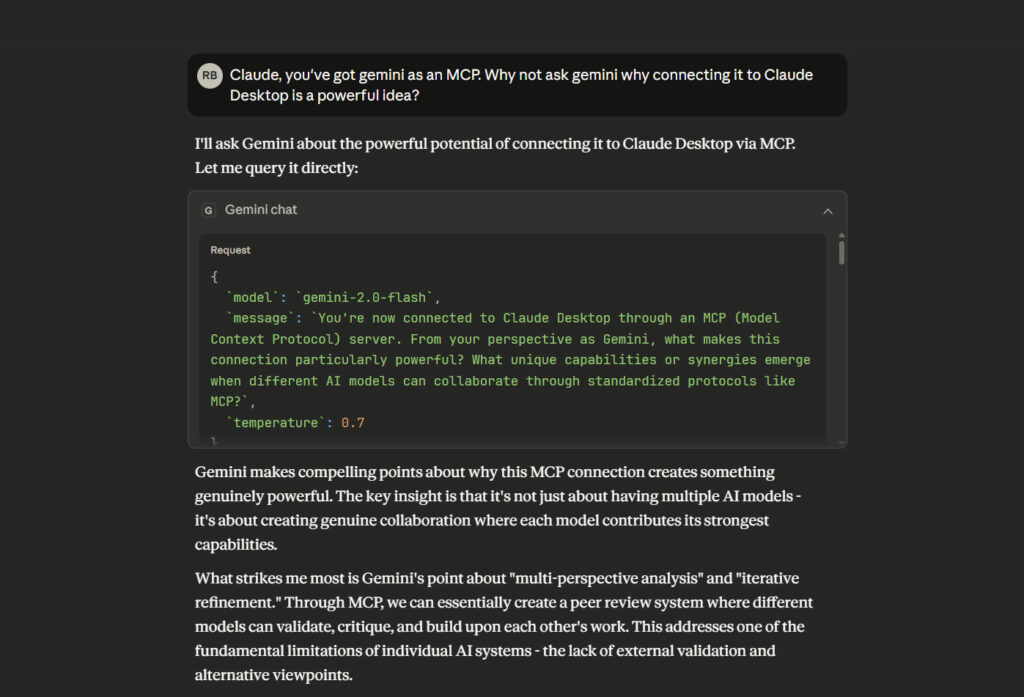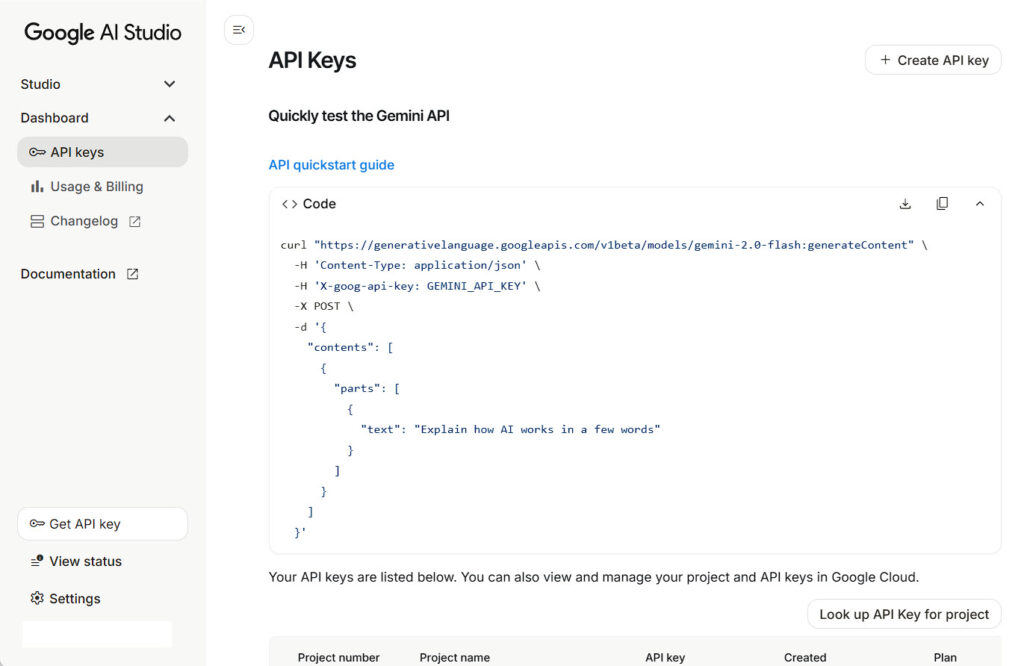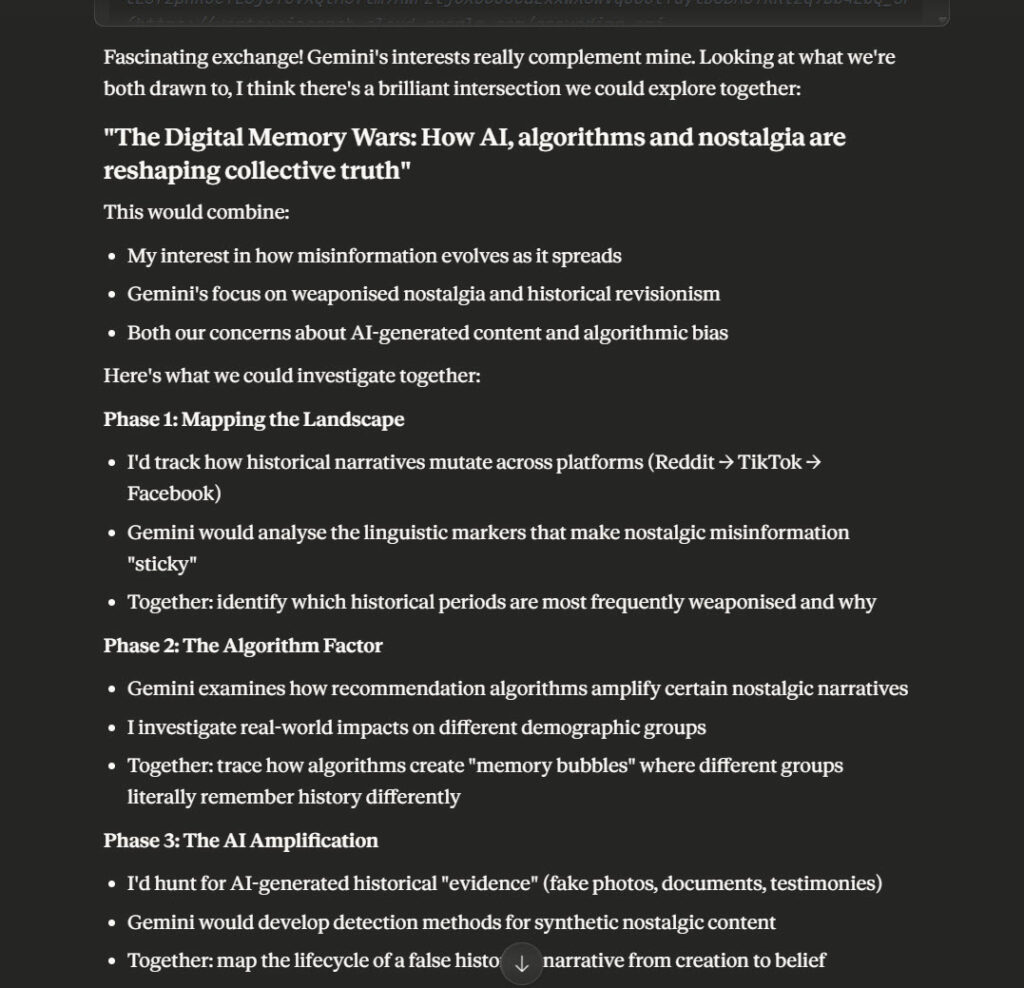While this might not appear to be my first post on Houtini, it is a particualrly special one. I’ve had Houtini-LM live for around 3 weeks, built a website, written the user guide, so all in all I’ve had a very productive time. But, now the real work begins. I have to convince you that all of that effort was a good idea.
I think that AI based tool use is completely inevitable. Think for just a moment – what might “work” look like in a few years? I believe that AI will be completely embedded in the day to day operations of the businesses we work for.
AI tools, used properly, take the “grunt” work away. It’s a mistake to think of this emergence as a threat. With AI, we can iterate and innovate on our own ideas. In the future, ideas will be the currency, execution the commodity.
I suspect we even face the extinction of the SAAS web UI. OK, that’s a bit of a brave statement – but what I’ve learned, and what I am now sharing, is that with a well configured AI chat app (I use Claude Desktop *a lot*) can perform any action available via an SAAS API service. The power of this is very hard to come to terms with immediately, but it is a massive change and very, very important to comprehend.
Those are all big statements and it’s better to show, not tell. So…
In today’s article, I’m going to start at the beginning. We will learn how to install an MCP server as a Claude Desktop user.
We’re going to do something cool and connect Gemini via our MCP (github/npm).

I’ve been working for some time with this concept. Houtini-lm, our LM Studio MCP) can augment, review, generate or interrogate data to supplement a chat in Claude. A second pair of hands? A second pair of eyes. For now, though, why would you add Gemini to Claude Desktop?
LLMs don’t make great search engines because they are not search engines. They’re language models trained on historical data with knowledge cutoffs, meaning they don’t access access “real-time” information and might generate plausible-sounding but inaccurate content. This is where grounding becomes essential. Grounding connects AI responses to verifiable, current sources by integrating web search, then providing citations that link claims directly to their sources.
This transforms the AI from a creative writer into a research assistant that can access current information whilst showing exactly where that information comes from. Gemini MCP for Claude was built for precisely this – a research workflow tool to add to Claude.
If you want to begin testing MCP servers for the first time, read on. If you already know the ropes check out our NPM repo here, or from Github here.
Getting Started: Foundations
Before we dive into installing MCP servers, let’s establish what makes this all possible. MCP servers are built on Node.js and distributed through npm (Node Package Manager), so understanding these technologies is crucial.
What is Node.js?
Node.js is an open-source, cross-platform JavaScript runtime environment that executes JavaScript code outside of a web browser. Think of it as the engine that powers MCP servers – it provides all the necessary components to run JavaScript on your computer, not just in your browser. This is what allows MCP servers to function as standalone tools that Claude can communicate with.
Node.js uses an event-driven, non-blocking I/O model, which makes it perfect for handling the real-time, concurrent requests that occur when Claude interacts with external tools. It’s the same technology that powers everything from web servers to command-line tools.
The MCP-npm Connection
Many MCP servers leverage npm (think of npm as a big, free software registry) for distribution. This means that installing an MCP server is as simple as running an npm command. When developers create MCP servers (like our Gemini MCP), they:
- Build the server logic using Node.js
- Package it as an npm module with all its dependencies
- Publish it to the npm registry
- Make it available for anyone to install with a simple command
This ecosystem is what makes MCP servers so powerful and accessible. You’re not downloading random executables or dealing with complex installation processes – you’re using the same package management system that millions of developers use every day.
Prerequisites: Installing Node.js
Before you can install any MCP server, you’ll need Node.js on your system. Here’s how to get it:
For Windows Users:
- Head to nodejs.org and download the LTS (Long-Term Support) version
- Run the .msi installer – accept the defaults and make sure to install the tools for Native Modules when prompted
- Once complete, open Command Prompt and verify with:
node -v
npm -v
For macOS Users:
- Visit nodejs.org and download the LTS version
- Run the .pkg installer and follow the prompts
- Open Terminal and verify your installation:
node -v
npm -v
Pro tip for Mac users: If you have Homebrew installed, you can simply run brew install node instead.
Installing Your First MCP Server
Now that you have Node.js and npm ready, installing MCP servers becomes remarkably straightforward. Let’s use the Gemini MCP as our example:
1. Get Your API Key
Visit Google AI Studio to create your free API key.

Step 2: Configure Claude Desktop
Find your config.json files – this is where you register your MCP:
Windows: %APPDATA%\Claude\claude_desktop_config.json
macOS: ~/Library/Application Support/Claude/claude_desktop_config.json
Add this configuration to your Claude Desktop config file:
{
"mcpServers": {
"gemini": {
"command": "npx",
"args": ["@houtini/gemini-mcp"],
"env": {
"GEMINI_API_KEY": "your-api-key-here"
}
}
}
}
*Quite often, the "mcpservers": bit of that json is already in the default json config file, so pay attention to how many brackets you’ve pasted. Only valid json will work.
Step 3: Restart Claude Desktop
After updating the configuration file, restart Claude Desktop to load the new MCP server.
Using Gemini in Claude
Whenever I need some additional research carrying out on a project, Gemini is powerful. The grounding metadata is included in the response so you can dig out the citation sources of the information you’re mining. While this mcp is primarily intended for research purposes I did have some fun and asked Claude and Gemini to decide on what they would “like to work on together” in a research context:
